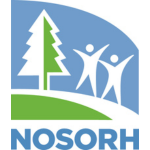By: Beth Blevins
Residents in rural communities across the Hawaiian Islands have been sharing their “stories of health” in community meetings as part of an effort to build a framework of health derived from community values and practices.
“A common thread in all these meetings is that having a connection to what matters is really what can make good, positive change in the community,” said Gregg Kishaba, Rural Communities Health Coordinator at the Hawaii State Office of Primary Care and Rural Health (HI OPCRH).
click image to enlargeThe meetings, sponsored by the Hawaii Public Health Institute (HPHI) and supported by HI OPCRH, are part of a larger, long-term strategy for achieving “Pilinahā”—a nonclinical, universal view of health and wellness developed by the communities themselves. The objectives of Pilinaha are: deepening a connection to place, to the past, to others, and to the best parts of one’s self. As part of the initial phase of this strategy, 17 community forums, which included discussions and storytelling sessions, were held on all six islands.
“We had the connections in a lot of rural communities already so they (HPHI) wanted to partner with us,” said Scott Daniels, FLEX Coordinator at the HI OPCRH. “We were part of the original planning committee. We had to do a lot homework beforehand to figure out how many meetings we would be having and who would lead in the community.”
HI OPCRH staff, trained in the THRIVE (Tools for Health Resilience in Vulnerable Environments) method in 2015, helped facilitate the meetings. “THRIVE really does involve the whole community,” Daniels said. “It provides an interactive method for communities to get out there and record and discover their community.”
“THRIVE is a unique tool that focuses on community and the concept of health equity,” Kishaba added. “The process guides communities to assess and identify root causes through a health equity lens. THRIVE allows for multi-sector partnerships to develop, facilitates a deeper understanding of the social determinants of health, and builds a foundation for future action and activities.”
click image to enlargeFor example, Kishaba explained, “if a community chooses to focus on a particular disease, like diabetes, THRIVE has an online tool that walks you through what kind of questions should be addressed. Or if a community says ‘it’s not all about the disease state, it’s more about where we live, our economy, education’—you can take that path. But that will eventually connect you back to a health issue, like asthma, which can be exacerbated by roaches or dust.”
Most communities chose not to focus “on the disease or on deficit or scarcity, but on the positive side of health,” Kishaba said. “So, we might start off a meeting, by asking: ‘When was the last time you felt good about yourself or you were healthy?’ Many of the seniors at the meetings went back to a time when they were younger and had the freedom to ride bicycles or walk safely in the community.”
“It’s useful getting the community to think of those other factors that contribute to the health of the community,” Daniels said. “It’s getting back to social determinants. The focus is on trying to establish a framework where people live healthy in their environment and the people that they are around so that creating those connections will ultimately improve A1c counts.”
Daniels said that they have found their THRIVE training useful for other efforts, including Community Health Needs Assessments (CHNAs). “It’s another tool and another way to look at health in your community,” he said. “We have been using THRIVE training to help hospitals break out of the hospital-clinic-medical thing and think more about the environment.”
The National Public Health Institute provided funding for the 17 meetings and the statewide forums, and the original THRIVE training was coordinated by the Hawaii Public Health Institute, Kishaba said.
HI OPCRH is supporting the creation of a video that captures what was learned from these community meetings. “Our office understands the importance of storytelling through digital media, so we provided the resources to tell this in a digital format instead of just having a booklet or pdf,” Kishaba said. “We sent film crews to the meetings, based on everyone’s input, to pick and choose unique stories that will captivate audiences.” The film will serve as a roadmap and springboard for future activities, Kishaba said.
“Once the video is developed, we will go back to those 17 communities to show it,” Kishaba said. The video also will be shown at statewide conferences and be available for free on the HI OPCRH website.
Does your SORH have a “Promising Practice”? We’re interested in the innovative, effective and valuable work that SORHs are doing. Contact Ashley Muninger at [email protected] to set up a short email or phone interview in which you can tell your story.
The site has 4 awesome rules for the essaydragon.com comments they accept
